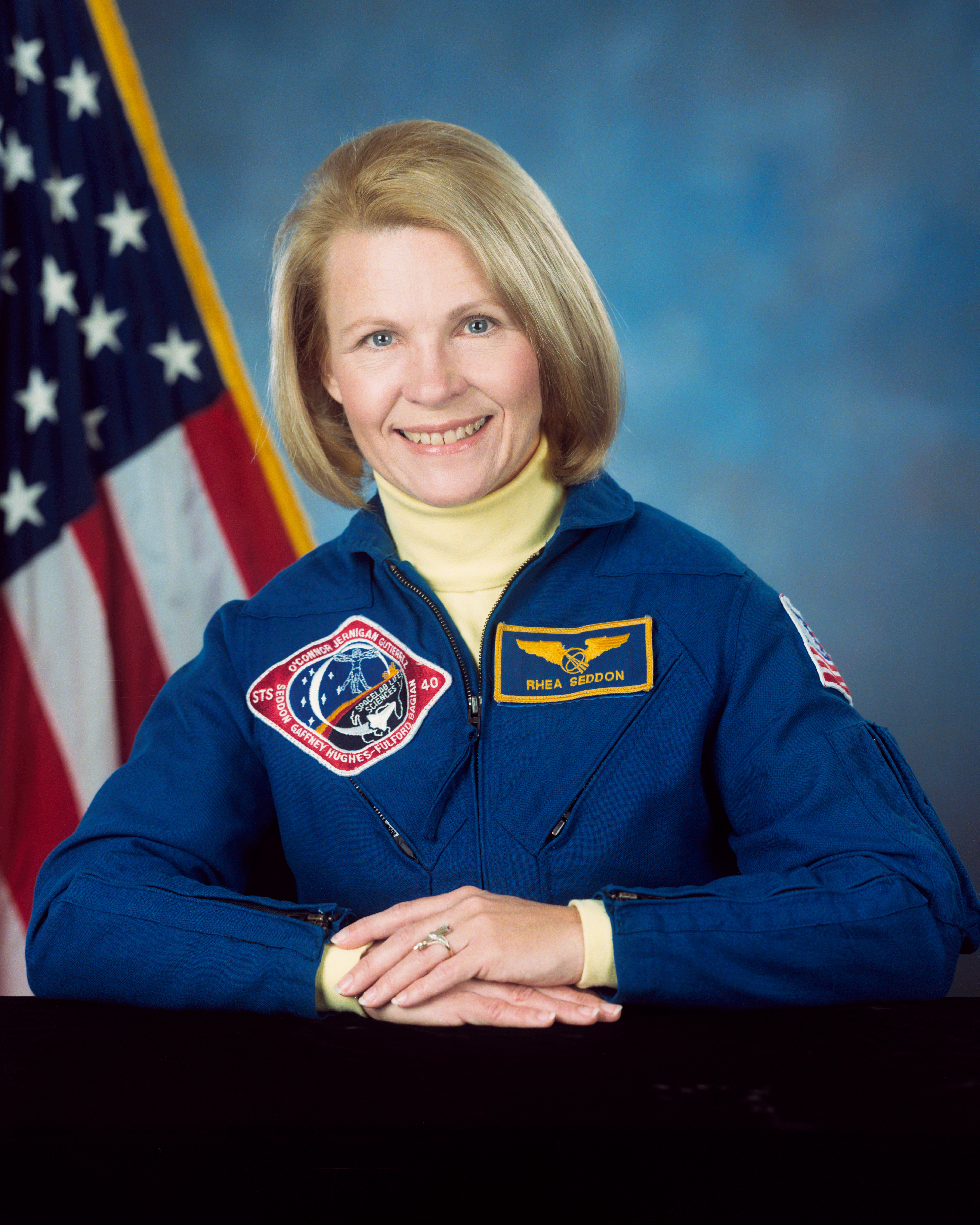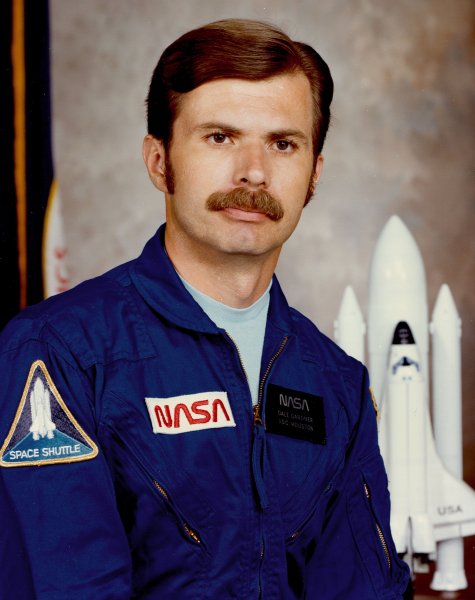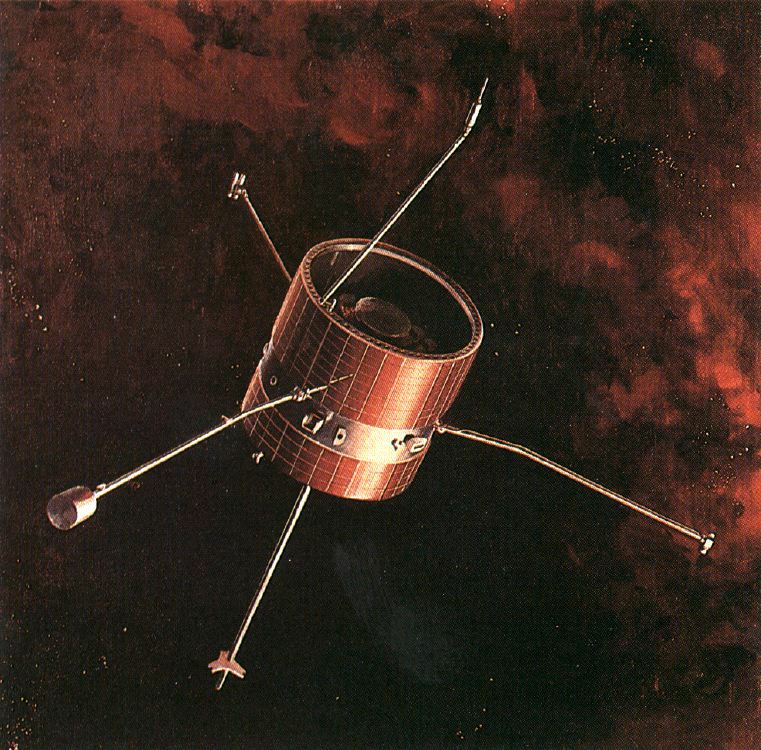Space History for November 8
If you are not already a subscriber, you are welcome to enter your email address here to sign up to receive the Space History newsletter on a daily basis. Under no circumstances will we release your legitimate email address entered here to outside persons or organizations, and it will only be used for mailing the specific information you have requested.
| Enter your email address here: |
Unsubscribe instructions are included in every newsletter issue in case you decide you no longer wish to receive it.
Note: We record the IP address from which subscriptions are entered to help prevent SPAM abuses.
Race To Space
Someone will win the prize...
... but at what cost?
Visit RaceToSpaceProject.com
to find out more!
1378
Halley's Comet passed perihelion in its twenty-second known passage, as calculated from records including ones by Chinese astronomers.
In 2000 years of observations since 240 BCE, Chinese records have never missed a return of Halley's Comet. From those records, Cowell and Crommelin computed the dates of perihelion passage as:
1. 15 May 240 BCE
2. 20 May 163 BCE
3. 15 August 87 BCE
4. 8 October 12 BCE
5. 26 January 66 CE
6. 25 March 141 CE
7. 6 April 218 CE
8. 7 April 295 CE
9. 13 February 374 CE
10. 3 July 451 CE
11. 15 November 530 CE
12. 26 March 607 CE
13. 26 November 684 CE
14. 10 June 760 CE
15. 25 February 837 CE
16. 17 July 912 CE
17. 2 September 989 CE
18. 25 March 1066 CE
19. 19 April 1145 CE
20. 10 September 1222 CE
21. 22.7 October 1301 CE
22. 8.8 November 1378 CE
23. 8.2 January 1456 CE
24. 25.8 August 1531 CE
25. 26.9 October 1607 CE
26. 14.8 September 1682 CE
27. 12.6 March 1758 CE
28. 15.9 November 1835 CE
29. 19.7 April 1910 CE
30. 9 February 1986 CE
Note that the precision of the dates from passage 21 onward could be computed with increased accuracy because of additional observations. However, at the time of their computation, the 1986 passage was still a future event. (The actual date was found from other sources.)
On 19 April 607, Comet 1P/607 H1 (Halley) approached within 0.0898 AU (13.5 million km, 8.4 million miles) of Earth. On 374-April-1.9, it had approached closer, having come within 0.0884 AU (13.2 million km, 8.2 million miles), and on 837-April-10.5, it became the third closest approach in history prior to 1900, passing within 0.0334 AU (5 million km, 3.1 million miles).
On 16 October 1982, astronomers David Jewitt and G. Edward Danielson using a CCD camera with the 5.1 m Hale telescope at Mt. Palomar Observatory were the first to detect Halley's Comet on its thirtieth recorded return.
See also The past orbit of Halley's Comet (SAO/NASA ADS)
See also Comet Close Approaches prior to 1900 (CNEOS)
See also History of Halley's Comet (Wikipedia)
See also Halley's Comet (CQ Press)
See also Comet 1P/Halley (Halley's Comet) (Smithsonian NASM)
https://adsabs.harvard.edu/full/1934PA.....42..191T
1656
Born, Edmund Halley, English astronomer, geophysicist, mathematician, meteorologist, and physicist (Gregorian calendar date)
Edmond (or Edmund) Halley (29 October 1656 (Julian calendar) (8 November Gregorian) - 14 January 1742) had an extensive career which included charting stars in the southern hemisphere; identifying solar heating as the cause of atmospheric motion and correlating barometric pressure with altitude; publishing an article on life annuities which strongly influenced the development of actuarial science; charting compass variations across the Atlantic ocean; and succeeding John Flamsteed as Astronomer Royal. He is perhaps best known for his suggestion that the comet sightings of 1456, 1531, 1607 and 1682 related to the same comet, which became generally known as Halley's Comet when it returned in 1758 as he predicted it would.
https://en.wikipedia.org/wiki/Edmond_Halley
1834
Born, Johann Karl Friedrich Zoellner, German astronomer (astro photometer)
https://en.wikipedia.org/wiki/Johann_Karl_Friedrich_Z%C3%B6llner
1848
Born, Gottlob Frege, German mathematician, logician, philosopher (regarded as a founder of both modern mathematical logic and analytic philosophy)
https://en.wikipedia.org/wiki/Gottlob_Frege
1853
J. R. Hind discovered asteroid #27 Euterpe.
1868
Born, Felix Hausdorff, German mathematician, considered to be one of the founders of modern topology, contributed significantly to set theory, descriptive set theory, measure theory, function theory and functional analysis
Felix Hausdorff (8 November 1868 - 26 January 1942) was a German mathematician who is considered to be one of the founders of modern topology and who contributed significantly to set theory and functional analysis. He defined and studied partially ordered sets, Hausdorff spaces, and the Hausdorff dimension. He proved the Hausdorff maximality theorem. He published philosophical and literary works under the pseudonym "Paul Mongre".
In 1942, when Hausdorff (a Jew) could no longer avoid being sent to a concentration camp, he committed suicide together with his wife and sister-in-law.
https://mathshistory.st-andrews.ac.uk/Biographies/Hausdorff/
1875
J. Palisa discovered asteroid #155 Scylla.
1895
While experimenting with electricity at the University of Wurzburg, Wilhelm Roentgen discovered X-rays.
https://www.nobelprize.org/prizes/physics/1901/rontgen/biographical/
1898
A. Charlois discovered asteroid #438 Zeuxo.
1931
K. Reinmuth discovered asteroid #3416 Dorrit.
1932
Born, Benjamin William "Ben" Bova, US science and science fiction author, six-time Hugo award winner, past president of the National Space Society and the Science Fiction Writers of America
https://en.wikipedia.org/wiki/Ben_Bova
1936
Born, Edward George Gibson PhD (at Buffalo, New York, USA), NASA astronaut (Skylab 4; 84d 1.25h in spaceflight)

Astronaut Ed Gibson PhD, NASA photo S71-52275 (1971)
Source: NASA Human Space Flight Gallery
https://en.wikipedia.org/wiki/Edward_Gibson
1936
M. Laugier discovered asteroid #1755 Lorbach.
1947
Born, Margaret Rhea Seddon MD (at Murfreesboro, Tennessee, USA), NASA mission specialist astronaut (STS 51-D, STS 40, STS 58; over 30d 2.25h total time in spaceflight), married to astronaut Robert Lee "Hoot" Gibson

Astronaut M. Rhea Seddon MD, NASA photo (22 May 1992)
Source: Wikipedia (www.jsc.nasa.gov unavailable November 2019)
https://en.wikipedia.org/wiki/Margaret_Rhea_Seddon
1948
Born, Dale Allan Gardner (at Fairmont, Minnesota, USA), Captain USN, NASA mission specialist astronaut (STS 8, STS 51-A; nearly 14d 1h total time in spaceflight) (deceased)

Astronaut Dale Gardner, NASA photo
Source: Wikipedia (www.jsc.nasa.gov unavailable November 2019)
https://en.wikipedia.org/wiki/Dale_Gardner
1948
M. Laugier discovered asteroid #1690 Mayrhofer.
1950
C. A. Wirtanen discovered asteroid #2044 Wirt.
1952
Born, Charles Edward Jones (at Clinton, Indiana, USA), astronaut candidate (DoD Group 2 - 1982) (deceased, Sept. 11 attacks)
http://www.spacefacts.de/bios/astronauts/english/jones_charles.htm
1958 07:30:00 GMT
NASA launched Pioneer 2 (Able 3) as an attempted Lunar orbiter, but the third stage failed to ignite.
Pioneer 2 (Able 3), launched 8 November 1958 from the Atlantic Missile Range at Cape Canaveral, Florida, using a Thor-Able booster and the Air Force acting as executive agent for NASA, was the last of the three project Able space probes designed to probe Lunar and cislunar space. Shortly after launch, the third stage of the launch vehicle separated but failed to ignite, and Pioneer 2 did not achieve its intended Lunar orbit. The instrumented payload spacecraft attained a maximum altitude of 1550 km (963 miles) before reentering Earth's atmosphere at 28.7 N, 1.9 E over NW Africa. A small amount of data was obtained during the short flight, including evidence that the equatorial region around Earth has higher flux and higher energy radiation than previously considered and that the micrometeorite density is higher around Earth than in space.
Pioneer 2 was nearly identical to Pioneer 1. It consisted of a thin cylindrical midsection with a squat truncated cone frustrum on each side. The cylinder was 74 cm in diameter and the height from the top of one cone to the top of the opposite cone was 76 cm. Along the axis of the spacecraft and protruding from the end of the lower cone was an 11 kg solid propellant injection rocket and rocket case, which formed the main structural member of the spacecraft. Eight small low-thrust solid propellant velocity adjustment rockets were mounted on the end of the upper cone in a ring assembly which could be jettisoned after use. A magnetic dipole antenna also protruded from the top of the upper cone. The shell was composed of laminated plastic. The total mass of the spacecraft after vernier separation but before injection rocket firing was 39.5 kg (86.3 pounds).
The scientific instrument package had a mass of 15.6 kg and consisted of an STL image-scanning television system (which replaced the image scanning infrared television system on Pioneer 1), a proportional counter for radiation measurements, an ionization chamber to measure radiation in space, a diaphragm/microphone assembly to detect micrometeorites, a spin-coil magnetometer to measure magnetic fields to 5 microgauss, and temperature-variable resistors to record spacecraft internal conditions. The spacecraft was powered by nickel-cadmium batteries for ignition of the rockets, silver cell batteries for the television system, and mercury batteries for the remaining circuits. Radio transmission was at 108.06 MHz through a magnetic dipole antenna for the television system, telemetry, and doppler. Ground commands were received at 115 MHz. The spacecraft was to be spin stabilized at 1.8 rps, the spin direction approximately perpendicular to the geomagnetic meridian planes of the trajectory.
https://nssdc.gsfc.nasa.gov/nmc/spacecraft/display.action?id=PION2
1959
Goethe Link Observatory discovered asteroid #2848.
1960 15:18:00 GMT
The US launched LJ-5 (Little Joe), an unmanned test vehicle, for a maximum dynamic pressure abort test, and qualification of the launch escape system and structure. The objectives were not met, the spacecraft did not separate from the launch vehicle.
LJ-5 (Little Joe 5), the first of the test series with a McDonnell production spacecraft, was launched from Wallops Island on 8 November 1960 to check the spacecraft in an abort simulating the most severe launch conditions. The launch was normal until 15.4 seconds after lift-off, at which time the escape rocket and tower jettison motor ignited prematurely. The booster, capsule, and tower remained mated through ballistic trajectory, and the spacecraft was destroyed on impact because it did not detach from the launch vehicle. Failure to attain mission objectives was attributed to several possible causes. One of these was failure of the spacecraft-to-adapter clamp-ring limit switches. Another possibility was failure of the escape tower clamp-ring limit switches. A third was improper rigging of the limit switches in either of those locations so that vibration or deflection could have caused switch closure. Since the test objectives were not met, a repeat of the mission was planned.
https://en.wikipedia.org/wiki/Little_Joe_5
1968 09:46:00 GMT
NASA launched a Thor Delta E from Cape Canaveral, carrying Pioneer 9 into space to collect solar radiation data from solar (heliocentric) orbit, and the TTS 2 (TATS 2, TETR 2) Test and Training Satellite, a test vehicle for the Manned Space Flight Network
Pioneer 9 (Pioneer-D), launched 8 November 1968, was the fourth in a series of Sun orbiting, spin stabilized, solar cell and battery powered satellites designed to obtain measurements of interplanetary phenomena from widely separated points in space on a continuing basis. The spacecraft carried experiments to study the positive ions and electrons in the solar wind, the interplanetary electron density (radio propagation experiment), solar and galactic cosmic rays, the interplanetary magnetic field, cosmic dust, and electric fields. Also, a new data coding process was implemented for Pioneer 9. Its main antenna was a high-gain directional one. The spacecraft was spin stabilized at about 60 rpm, and the spin axis was perpendicular to the ecliptic plane, pointed toward the south ecliptic pole.
By ground command, one of five bit rates, one of four data formats, and one of four operating modes could be selected. The five bit rates were 512, 256, 64, 16, and 8 bps. Three of the four data formats contained primarily scientific data and consisted of 32 seven-bit words per frame. One scientific data format was used at the two highest bit rates, another was used at the three lowest bit rates, and the third contained data from only the radio-propagation experiment. The fourth data format contained mainly engineering data. The four operating modes were real-time, telemetry-store, duty-cycle store, and memory readout. In the real-time mode, data were sampled and transmitted directly (without storage) as specified by the data format and bit rate selected. In the telemetry-store mode, data were stored and transmitted simultaneously in the format and at the bit rate selected. In the duty-cycle store mode, a single frame of scientific data was collected and stored at a rate of 512 bps. The time period between collection and storage of successive frames could be varied by ground command between 2 and 17 min to provide partial data coverage for periods of up to 19 hours, as limited by the bit-storage capacity. In the memory readout mode, data were read out at whatever bit rate was appropriate to the satellite distance from the Earth.

Artist's concept of Pioneer 9 in space, NASA illustration
https://nssdc.gsfc.nasa.gov/nmc/spacecraft/display.action?id=1968-100A
1969 01:55:00 GMT
A Scout rocket launched from Vandenberg, California carried Germany's Azur (German Research Satellite A) into orbit where it examined the Van Allen belts, solar particles and aurora.
https://nssdc.gsfc.nasa.gov/nmc/spacecraftDisplay.do?id=1969-097A
1975
N. Chernykh discovered asteroid #3238.
1977
E. F. Helin and E. Shoemaker discovered asteroid #2430 Bruce Helin; E. F. Helin discovered asteroid #2099 Opik.
1980
E. Bowell discovered asteroid #2648 Owa.
1982 21:17:00 EDT (GMT -4:00:00)
A 6 pound meteorite struck the home of Robert and Wanda Donahue in Wethersfield, Connecticut, the second meteorite strike of a home in the town in less than 12 years.
https://peabody.yale.edu/collections/mineralogy-and-meteoritics/wethersfield-meteorite
1984 07:15:00 EST (GMT -5:00:00)
NASA launched STS 51-A (Discovery 2, Shuttle 14) which deployed TELESAT-H (ANIK) and SYNCOM IV-1, and retrieved PALAPA-B2 and WESTAR-VI.
The STS 51-A shuttle mission launch attempt on 7 November 1984 was scrubbed during a built-in hold at T-20 minutes due to wind shears in the upper atmosphere. The countdown 8 November 1984 proceeded as scheduled.
The Canadian communications satellite TELESAT-H (ANIK), attached to a Payload Assist Module-D (PAM-D), was deployed into geosynchronous orbit on flight day two. On the third flight day, the defense communications satellite SYNCOM IV-1 (also known as LEASAT-1) was deployed. Allen and Gardner, wearing jet-propelled manned maneuvering units, retrieved two malfunctioning satellites: PALAPA-B2 and WESTAR-VI, both deployed on Mission 41-B. Fisher operated the remote manipulator system, grappling the satellites and depositing them in payload bay. The middeck payloads were the Diffusive Mixing of Organic Solutions (DMOS) and Radiation Monitoring Equipment (RME) experiments.
STS 51-A ended on 16 November 1984 when Discovery landed on revolution 127 on Runway 15, Kennedy Space Center, Florida. Rollout distance: 9,454 feet. Rollout time: 58 seconds. Launch weight: 263,324 pounds. Landing weight: 207,505 pounds. Orbit altitude: 185 nautical miles. Orbit inclination: 28.5 degrees. Mission duration: seven days, 23 hours, 44 minutes, 56 seconds. Miles traveled: 3.3 million.
The crew for STS 51-A was: Frederick H. Hauck, Commander, David M. Walker, Pilot, and Mission Specialists Anna L. Fisher (the first "mom" in orbit), Dale A. Gardner, and Joseph P. Allen.
https://www.nasa.gov/mission_pages/shuttle/shuttlemissions/archives/sts-51A.html
1999
Died (natural causes), Yuri Vassilyevich Malyshev, Colonel Soviet AF, Soviet cosmonaut (Soyuz T-2, Soyuz T-11; nearly 11d 20h total time in spaceflight)
http://www.spacefacts.de/bios/cosmonauts/english/malyshev_yuri.htm
2009
Died, Vitaly Ginzburg, Russian physicist, astrophysicist, Nobel 2003 with Abrikosov and Leggett "for pioneering contributions to the theory of superconductors and superfluids", Soviet and Russian Academies of Sciences member, one father of Soviet H bomb
https://www.nobelprize.org/prizes/physics/2003/ginzburg/biographical/
We are going to run out of oil!
Visit SpacePowerNow.org
to help fix the problem.
SpacePowerNow.org - For Human Survival
Please help support our efforts by shopping from our sponsors.
This newsletter and its contents are Copyright © 2006-2025 by The L5 Development Group. All rights reserved. - Publication, in part or in whole, requires previous written permission. - Academic or personal-use citations must refer to http://L5Development.com as their source. Thank you for your cooperation.



